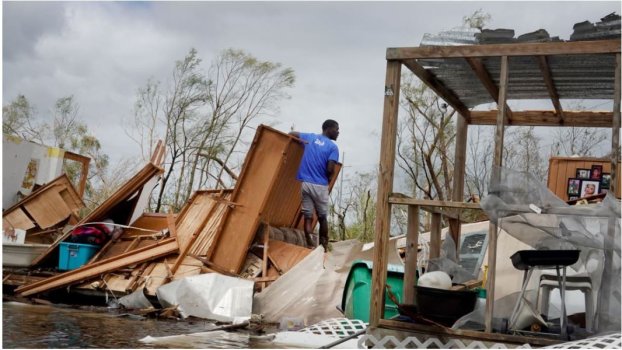During hurricanes, flash flooding, and other disasters, it can be extremely dangerous to send in first responders, even though people may badly need help.
Rescuers already use drones in some cases, but most require individual pilots to fly the unmanned aircraft by remote control. That limits how quickly rescuers can view an entire affected area, and it can delay aid from reaching victims.
Autonomous drones could cover more ground faster, especially if they could identify people in need, and notify rescue teams.
My team and I at the University of Dayton Vision Lab have been designing these autonomous systems of the future to eventually help spot people who might be trapped by debris. Our multi-sensor technology mimics the behavior of human rescuers to look deeply at wide areas and quickly choose specific regions to focus on, examine more closely, and determine if anyone needs help.
The deep learning technology that we use mimics the structure and behavior of a human brain in processing the images captured by the 2-dimensional and 3D sensors embedded in the drones. It is able to process large amounts of data simultaneously to make decisions in real time.
Continue reading: https://www.fastcompany.com/90671042/hurricane-ida-search-and-rescue-drones
Rescuers already use drones in some cases, but most require individual pilots to fly the unmanned aircraft by remote control. That limits how quickly rescuers can view an entire affected area, and it can delay aid from reaching victims.
Autonomous drones could cover more ground faster, especially if they could identify people in need, and notify rescue teams.
My team and I at the University of Dayton Vision Lab have been designing these autonomous systems of the future to eventually help spot people who might be trapped by debris. Our multi-sensor technology mimics the behavior of human rescuers to look deeply at wide areas and quickly choose specific regions to focus on, examine more closely, and determine if anyone needs help.
The deep learning technology that we use mimics the structure and behavior of a human brain in processing the images captured by the 2-dimensional and 3D sensors embedded in the drones. It is able to process large amounts of data simultaneously to make decisions in real time.
Continue reading: https://www.fastcompany.com/90671042/hurricane-ida-search-and-rescue-drones

